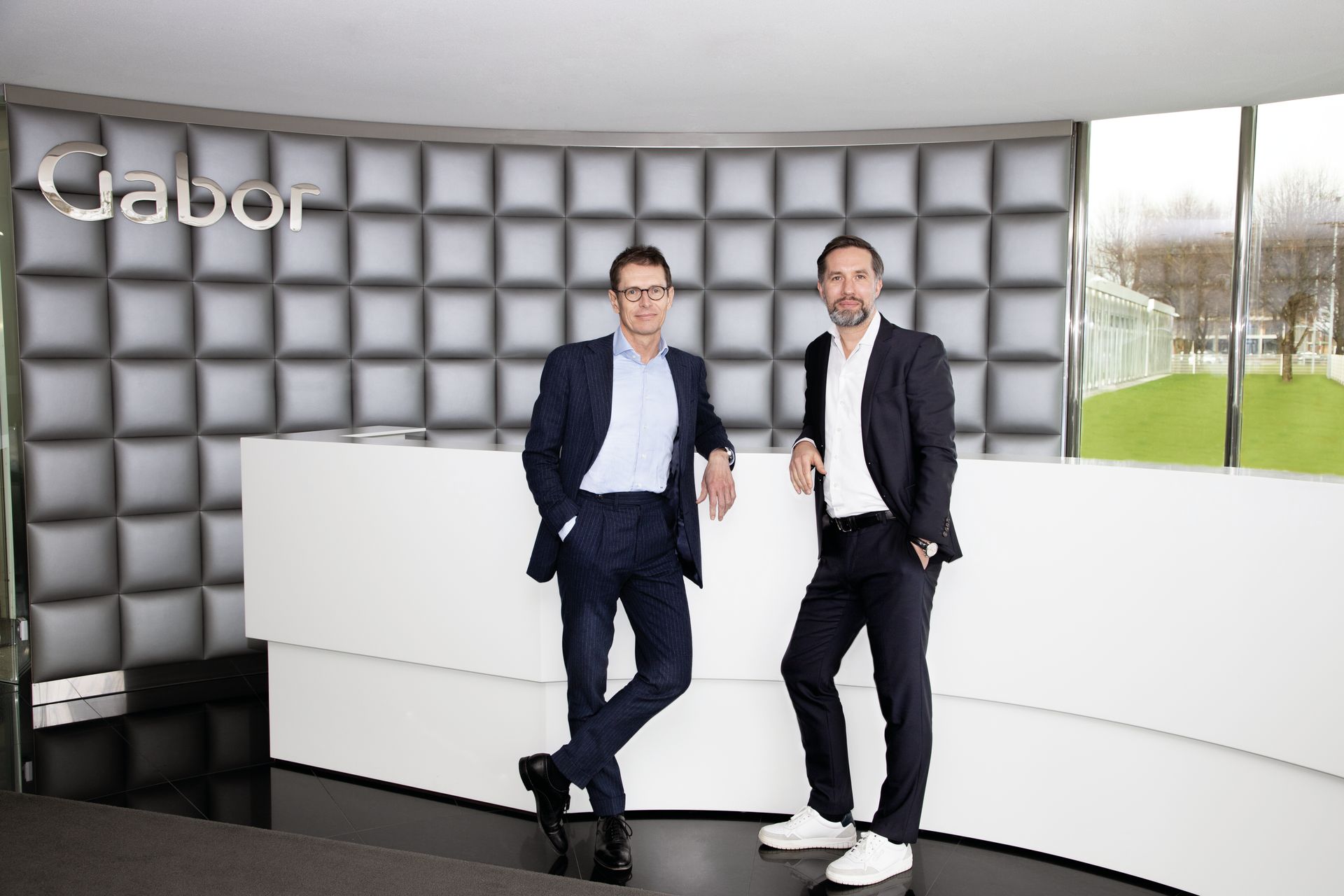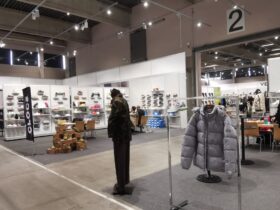Some of your partners criticize Gabor’s collection performance. There are too many standard things to see, too much that has been tried and tested. They miss fashionable accents, for example the retro sneaker for the typical Gabor customer…
Stefan Blöchinger: This confirms the measures we have taken. We start with the brand and then move on to the product and brand architecture. It is clearly our aim to appeal to new consumers in the future: people who we cannot currently reach because the collection is too rigid or not eye-catching in one place or another. I am therefore not surprised by this criticism from retailers. But I can promise that these are the issues we are working on every day.
Sascha Negele: We have also specifically created capacity in design in order to make conceptual progress. Not everything will necessarily be seen in the next collection. Some elements come into play earlier, others perhaps a little later. But this is also a resource that did not exist in the past.
So there will be the first new accents in the F/W 2025/26 collection. However, this has not yet fully emerged in the new constellation. Can one speak of a transitional collection?
Sascha Negele: It sounds like we’re trying to maintain the standard for now and then make the collections really nice next year. I wouldn’t see it that way. You will already see a lot of new things. The first samples I had in my hand were really cool, there were some real highlights. And we encouraged the product teams to be courageous. It is the first collection that was brought into alignment between the brands. Not everything is completely new. And in the future there will also be one or two duplications between the brands. Our goal in the medium term is to develop collections that consist of both profiled products and fashionable lace.
Some retailers complain about high price jumps in the Gabor collection, although the models are not necessarily better equipped. How do you rate that?
Stefan Blöchinger: On the one hand, it has to be said that our prices have been relatively stable for many years. In connection with Corona, prices overall have recently risen significantly. Pricing should not only be viewed from the cost perspective, but should also take into account what the product actually is worth to the consumer. And there we see that we certainly haven’t maximized all the prices that we could or should have maximized. We always tried to find the right path and make the situation tolerable for the dealers.
Sascha Negele: It is also important that Gabor will never win the price war because we want to meet the quality standards that consumers rightly have from us. Because we produce in our own factories and mainly in Europe. Because we want to meet these demands in terms of the use of materials, the fit and the quality of the shoes. And accordingly, there is a price point that we have to charge at the end of the day. Otherwise we would have to make compromises and we don’t want that. If you compare the price development of different manufacturers, you can see that it is not us who have made the biggest jumps. We may have done it a year or two later than some of our competitors, but partly out of necessity. An important aspect for trade is area productivity. It will be harder to achieve as the price points are pulled down. We will keep the prices quite stable in our new collection.
There is a special feature at Gabor when it comes to item numbers: These are created anew every mirror season. This annoys many retailers because it causes extra work. Will you solve this problem?
Stefan Blöchinger: We’re already there. This is definitely an unfortunate issue because it makes life difficult for the dealer. I can imagine that there are customers who don’t buy from us because we have such a complex structure. I can say that our new concept is 90% complete and we will implement it. It requires certain lead times because it has to fit into the rhythm of the season. But it will be one of our priorities in 2025.
For 2024, Mr. Blöchinger, you expected moderate volume growth at the beginning of the year. Has it come to this?
Stefan Blöchinger: The year 2024 has been a little more difficult than we would have liked. The exogenous factors did not play into our hands, and there were delays in the supply chain that we could not influence. That means we don’t have an increase, but rather a slight decrease. Nevertheless, we are not entirely dissatisfied with this situation. I would like to mention at this point that our team was really super motivated and highly committed and the result is also a result of that. I would like to thank the team for this.
Do you expect a positive boost in 2025, also with regard to consumption?
Stefan Blöchinger: I will deliberately not take part in speculation because we have seen in the past that this often has no effect. I think we just have to continue to monitor events and then respond as quickly as possible. Politics has certainly not helped recently to drive business development forward. Either way, we will start the new year positively.
How far have your efforts to bring a strategic partner on board progressed?
Stefan Blöchinger: The effort is ongoing and I can’t give you any details. We will communicate when there is something to communicate.






Leave a Reply